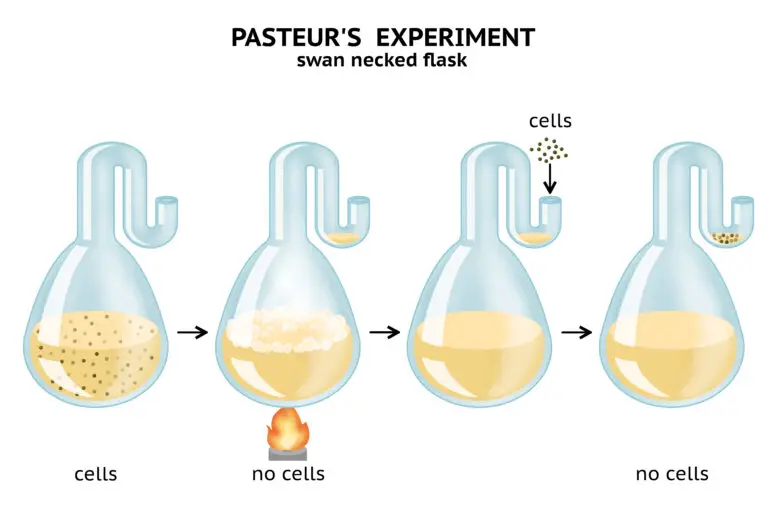Biogenesis

Table of Contents
What is Biogenesis?
Biogenesis refers to the principle that living organisms only arise from pre-existing organisms. This concept contrasts the idea of spontaneous generation, which suggests that living organisms could arise from non-living matter. Biogenesis is a fundamental concept in biology supported by extensive scientific evidence.
Overview of Biogenesis
Historical Context
Before the acceptance of biogenesis, there was a widespread belief in spontaneous generation, where it was thought that living organisms could arise spontaneously from inanimate matter. This idea was challenged and ultimately replaced by the principle of biogenesis.
Louis Pasteur's Experiments
Louis Pasteur, a French microbiologist, conducted groundbreaking experiments in the mid-19th century that decisively refuted the concept of spontaneous generation.
Using swan-necked flasks, Pasteur demonstrated that microorganisms did not appear in sterile broth unless exposed to air containing pre-existing microorganisms. This experiment supported the idea that life comes from existing life.
Cell Theory
All Living Organisms Are Composed of Cells: This tenet posits that cells are the basic building blocks of all living organisms, whether unicellular (consisting of a single cell) or multicellular (comprising many cells). This principle emphasizes the universality of cells in all forms of life on Earth.
The Cell Is the Basic Unit of Life: This aspect of the theory suggests that the cell is the smallest unit that can carry out all processes necessary for life. These processes include metabolism, energy transformation, growth, and reproduction. The cell is considered the most basic structural and functional unit of living organisms.
Cells Arise From Pre-existing Cells: This principle, based on the concept of biogenesis, states that new cells are created only by dividing existing cells. This process can occur through various forms of cell division, including mitosis (for somatic cells) and meiosis (for reproductive cells). This concept was established to counter the earlier notion of spontaneous generation, which suggested that life could emerge from non-living matter.
The development of cell theory in the 19th century was facilitated by advancements in microscopy and the study of living organisms at the cellular level. It has profound implications for biological research and medical practices, influencing areas such as genetics, microbiology, and the development of treatments for diseases at the cellular level.
Modern Understanding
Biogenesis, the principle that living organisms originate from existing living organisms, is a cornerstone of modern biology. This concept is supported by empirical evidence from diverse life forms, spanning bacteria, plants, and animals. In all these organisms, reproduction occurs through mechanisms that involve pre-existing living cells.
Whether through asexual methods like binary fission in bacteria or sexual reproduction in plants and animals, generating new life consistently requires the involvement of cells that are already alive, affirming the universal applicability of biogenesis in the natural world.
Endosymbiotic Theory
Endosymbiotic theory is a concept in evolutionary biology that explains eukaryotic cells’ origin from prokaryotic organisms. This theory, prominently advocated by Lynn Margulis in the 1960s, proposes that eukaryotic cells evolved from a symbiotic relationship between early eukaryotic ancestors and certain prokaryotic cells.
The theory suggests that mitochondria in eukaryotic cells originated from aerobic (oxygen-using) bacteria, while chloroplasts, found in plants and algae, originated from photosynthetic bacteria. These bacteria were engulfed by larger host cells, leading to a mutually beneficial relationship.
After being engulfed, instead of being digested or destroyed, these prokaryotic organisms are believed to have formed a symbiotic relationship with their host cell. Over time, they evolved to become organelles within the cell. The host cell provided protection and nutrients to the prokaryotes, while the prokaryotes, in turn, provided the host cell with additional energy through processes like photosynthesis (chloroplasts) and cellular respiration (mitochondria).
Biogenesis and Medicine
Biogenesis, which posits that living organisms arise from other living organisms, is fundamental in medicine, particularly in microbiology and the study of infectious diseases.
In medical practice, understanding biogenesis helps in developing strategies to prevent the spread of diseases by targeting the transmission of living pathogens. By knowing how these organisms reproduce and spread, healthcare professionals can devise effective containment and treatment methods, thereby controlling outbreaks and protecting public health.
Related Links
Ecosystems
Microorganisms
Organelles
Prokaryotic Cells